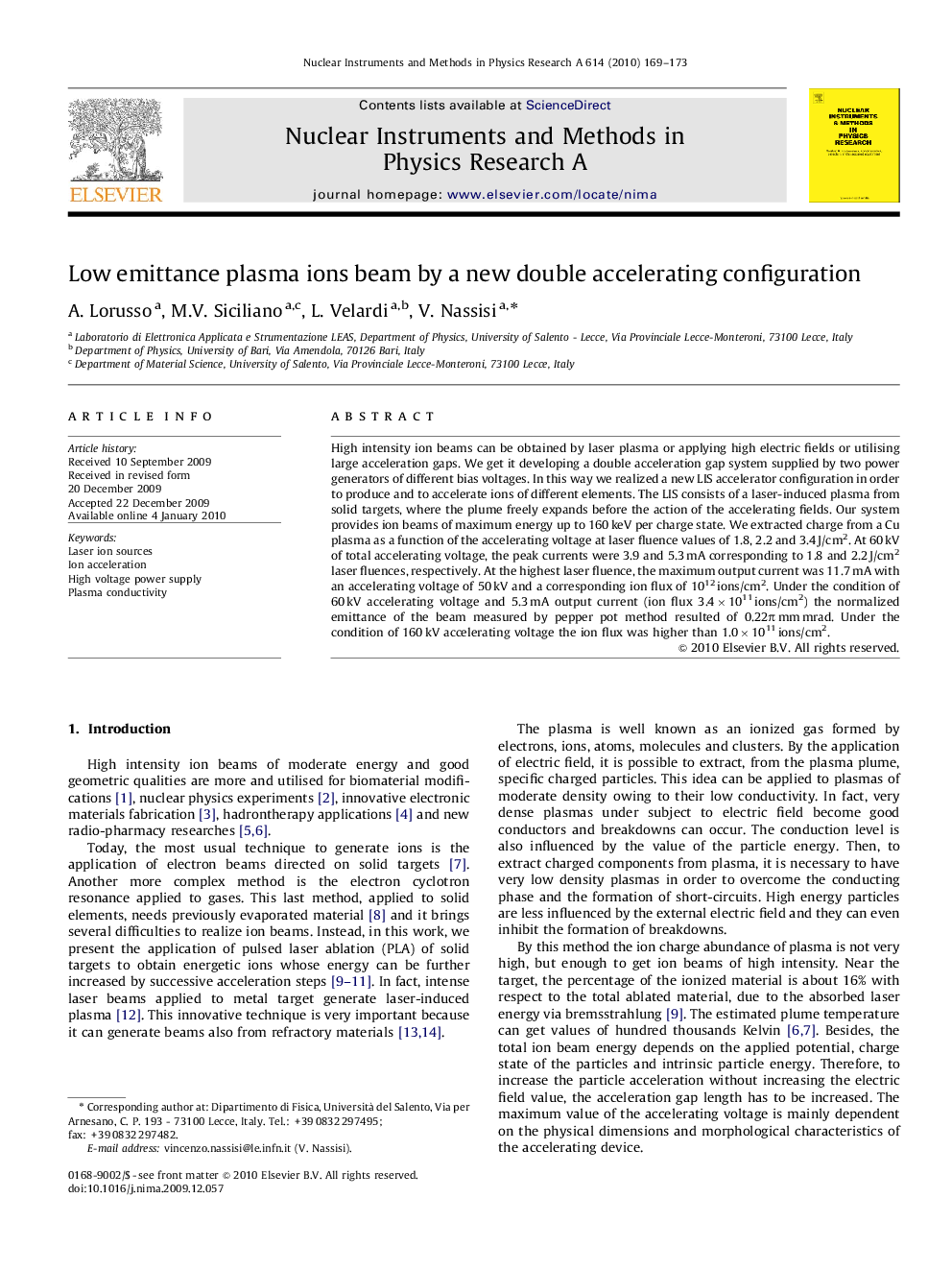| Article ID | Journal | Published Year | Pages | File Type |
|---|---|---|---|---|
| 1826760 | Nuclear Instruments and Methods in Physics Research Section A: Accelerators, Spectrometers, Detectors and Associated Equipment | 2010 | 5 Pages |
High intensity ion beams can be obtained by laser plasma or applying high electric fields or utilising large acceleration gaps. We get it developing a double acceleration gap system supplied by two power generators of different bias voltages. In this way we realized a new LIS accelerator configuration in order to produce and to accelerate ions of different elements. The LIS consists of a laser-induced plasma from solid targets, where the plume freely expands before the action of the accelerating fields. Our system provides ion beams of maximum energy up to 160 keV per charge state. We extracted charge from a Cu plasma as a function of the accelerating voltage at laser fluence values of 1.8, 2.2 and 3.4 J/cm2. At 60 kV of total accelerating voltage, the peak currents were 3.9 and 5.3 mA corresponding to 1.8 and 2.2 J/cm2 laser fluences, respectively. At the highest laser fluence, the maximum output current was 11.7 mA with an accelerating voltage of 50 kV and a corresponding ion flux of 1012 ions/cm2. Under the condition of 60 kV accelerating voltage and 5.3 mA output current (ion flux 3.4×1011 ions/cm2) the normalized emittance of the beam measured by pepper pot method resulted of 0.22π mm mrad. Under the condition of 160 kV accelerating voltage the ion flux was higher than 1.0×1011 ions/cm2.
